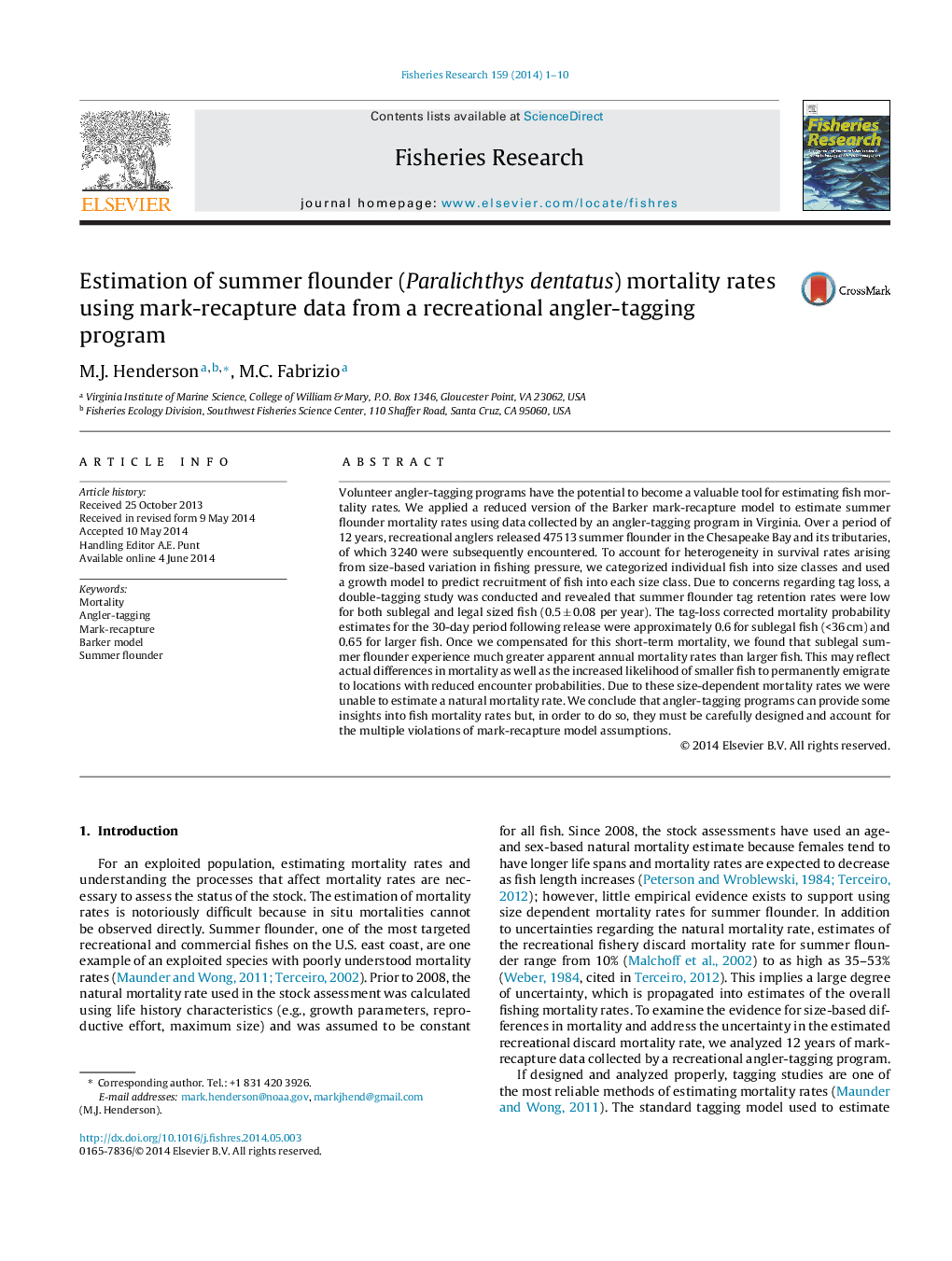| Article ID | Journal | Published Year | Pages | File Type |
|---|---|---|---|---|
| 4542977 | Fisheries Research | 2014 | 10 Pages |
•A mark-recapture model is developed to analyze data from an angler-tagging program.•Summer flounder mortality rates are estimated.•Recreational angler discard mortality rates were higher than expected.•Sublegal fish had much higher total mortality rates than larger fish.•Tag retention rates were low for both sublegal and legal sized fish.
Volunteer angler-tagging programs have the potential to become a valuable tool for estimating fish mortality rates. We applied a reduced version of the Barker mark-recapture model to estimate summer flounder mortality rates using data collected by an angler-tagging program in Virginia. Over a period of 12 years, recreational anglers released 47513 summer flounder in the Chesapeake Bay and its tributaries, of which 3240 were subsequently encountered. To account for heterogeneity in survival rates arising from size-based variation in fishing pressure, we categorized individual fish into size classes and used a growth model to predict recruitment of fish into each size class. Due to concerns regarding tag loss, a double-tagging study was conducted and revealed that summer flounder tag retention rates were low for both sublegal and legal sized fish (0.5 ± 0.08 per year). The tag-loss corrected mortality probability estimates for the 30-day period following release were approximately 0.6 for sublegal fish (<36 cm) and 0.65 for larger fish. Once we compensated for this short-term mortality, we found that sublegal summer flounder experience much greater apparent annual mortality rates than larger fish. This may reflect actual differences in mortality as well as the increased likelihood of smaller fish to permanently emigrate to locations with reduced encounter probabilities. Due to these size-dependent mortality rates we were unable to estimate a natural mortality rate. We conclude that angler-tagging programs can provide some insights into fish mortality rates but, in order to do so, they must be carefully designed and account for the multiple violations of mark-recapture model assumptions.
